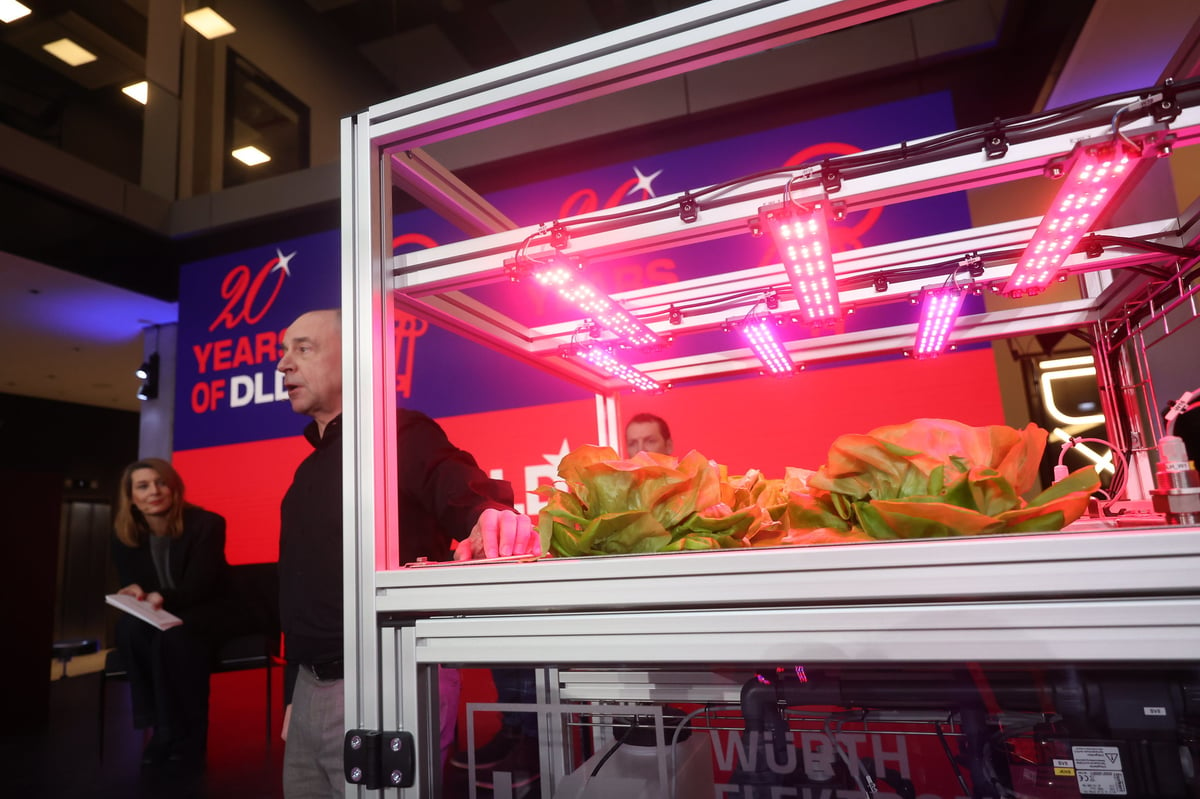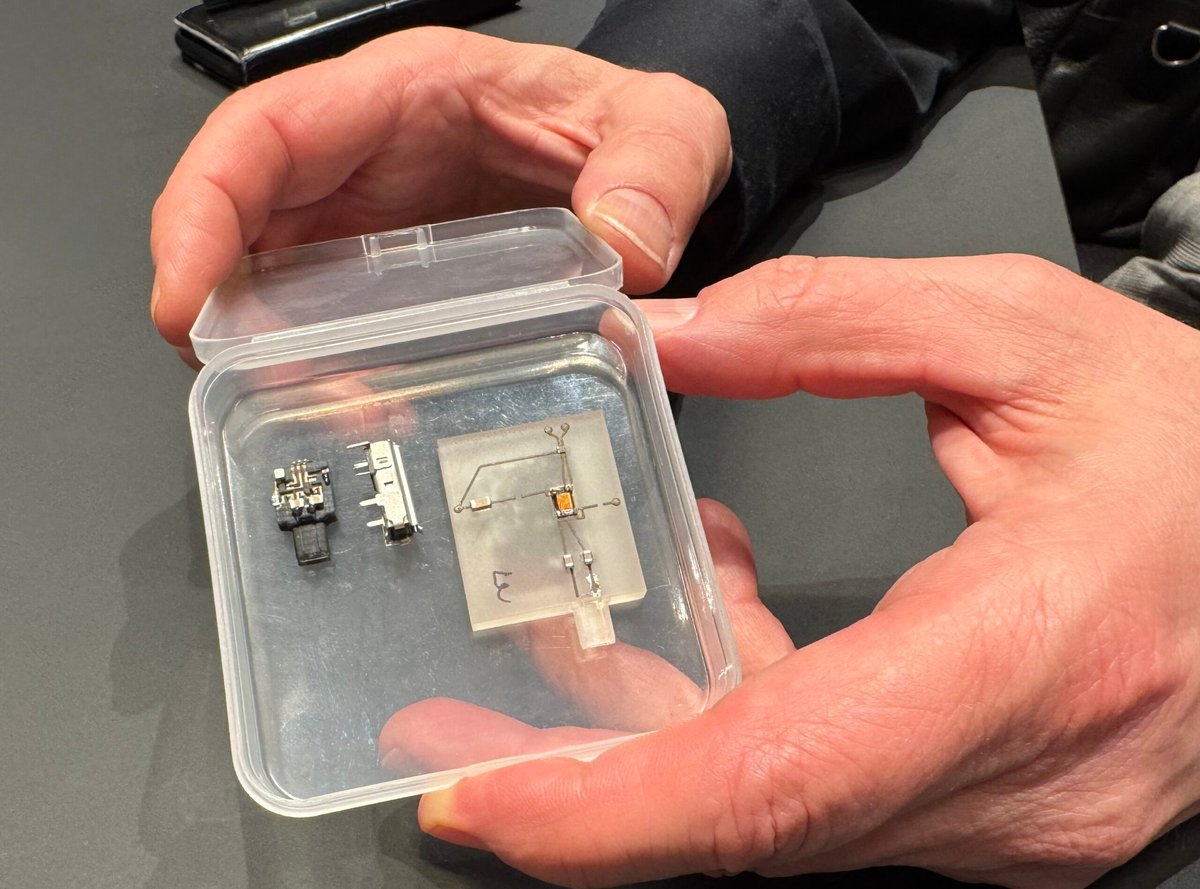This is not the first time Alexander Gerfer, CTO of Würth Elektronik eiSos (Würth Elektronik EMC & Inductive Solutions), has presented a sustainability project. The electrical engineering graduate grew up on a farm and admits he has ‘never completely let go of the topic.’
Every year at the DLD Congress in Munich, he presents collaborations with start-ups that rely on electronic components from his company. For example, harvesting robots can determine the degree of ripeness of strawberries or edible spirulina microalgae that grows more efficiently, thanks to sophisticated lighting technology. In 2025, it is the Net-Zero Greenhouse that Alexander Gerfer and Ryan Archer, CEO of Horizon Growers, presented. An essential piece of the puzzle in this idea is the Breeding Station, which was developed by Würth Elektronik in cooperation with Bürkert Fluid Control Systems (see image below).

All3DP: Würth Elektronik offers an extensive range of electronic and electromechanical components. What role does ‘production on demand’ play in this?
Alexander Gerfer: Würth Elektronik has been experimenting with additive manufacturing methods for years. For example, our SMD ferrite, a type of passive electronic component used for filtering high-frequency noise in electronic circuits, has long been produced using 3D technology. And Würth Additive, another division of Würth Group, focuses almost exclusively on innovative digital inventory solutions using additive manufacturing,
At Würth Elektronik eiSos, we see significant advantages in additive manufacturing, at least in theory. Ideally, we would only have to produce what is needed; we could produce on-site where it is needed and only in the quantities that are actually required. The basic idea is to provide raw materials and machines instead of producing and storing finished components in large quantities with high energy consumption, which the customer may not even buy.
One basic idea – perhaps overly visionary – would be that all our components could be 3D printed. Are we already that far in our industry? Unfortunately, not yet.
Do you already offer 3D printed components on demand?
When start-ups approach us with good ideas, for example, for special housing molds, we are happy to work with them. Here’s an example of an additively manufactured Single Pair Ethernet component: This connector was developed and 3D printed for the Ampere research project.

Here, we have packed several components into a small housing so that I, as a customer, don’t have to worry about where to place additional components, such as filters. If I skillfully integrate the components into the carrier material, I need less space and volume. For us, this production method has the advantage that we can act and adapt quickly – ideal as a showcase for customers who want quick design changes.
Another advantage is that we can produce sample quantities quickly and cost-effectively without having to wait for tooling. Because tooling means effort and costs that can be between €60,000 and €80,000. That’s not very efficient if I don’t yet know where the customer’s acceptance lies. With 3D printing, I can produce samples and quickly change the geometry if necessary. That’s what makes the technology so interesting to us.
Is additive manufacturing already financially worthwhile for your company?
Electronic components are – to put it kindly – under price pressure. Customers are looking at costs and not at efficiency and durability. Nobody wants to pay €30 for a plug-in power supply. An import from China can undercut the price but then offers less quality and longevity.
Of course, the integration of 3D printing has to do with price. Some components, such as Switch Mode Power Supply Transformers, are still manufactured mainly by hand, depending on the batch size. The question for a manufacturer is whether this is still worthwhile for large quantities. Here, too, the ideal scenario would be if I could print a plastic insulation layer around such a ferrite core and then a highly conductive copper winding. If that could be realized, that would be ideal.
Where do you still see opportunities for better integration?
It helps that much less basic inductance is required in switching controller technology today. This means that I need fewer layers and can marry components accordingly. The graphics card manufacturer Nvidia, for example, has found new ways to supply its AI processors with high energy with low losses, close to the processor. This requires entirely new technologies in coil production. Modern processors that support AI, in particular, need new power management solutions.
We have already developed a methodology with special coils that point in the right direction. Much of this is currently being trialed. 3D printing can help us here, as it is highly cost-intensive to build such tools. This allows me to iterate, test, and re-adjust more quickly in prototype construction in the event of minor problems. The big question will be whether this can be produced in large batch sizes and at competitive prices.
If you could wish for something from the 3D printing industry, what would it be?
I can think of a few things. Firstly, hardware costs would have to fall – that’s the buyer in me talking. Hybrid prints with chemical substances would be a big step forward. If we could map several work steps, such as bonding, lasering, and printing at the same time, that would make a difference. But I think I’m still wishing for too much.
The conversation is a translation from German. You can read the original on All3DP’s German website.
Lead image source: Source: Philipp Guelland for DLD / Hubert Burda Media
License: The text of "Rethinking Digital Manufacturing: Where Does On-Demand Production Stand in the Electronics Industry?" by All3DP Pro is licensed under a Creative Commons Attribution 4.0 International License.